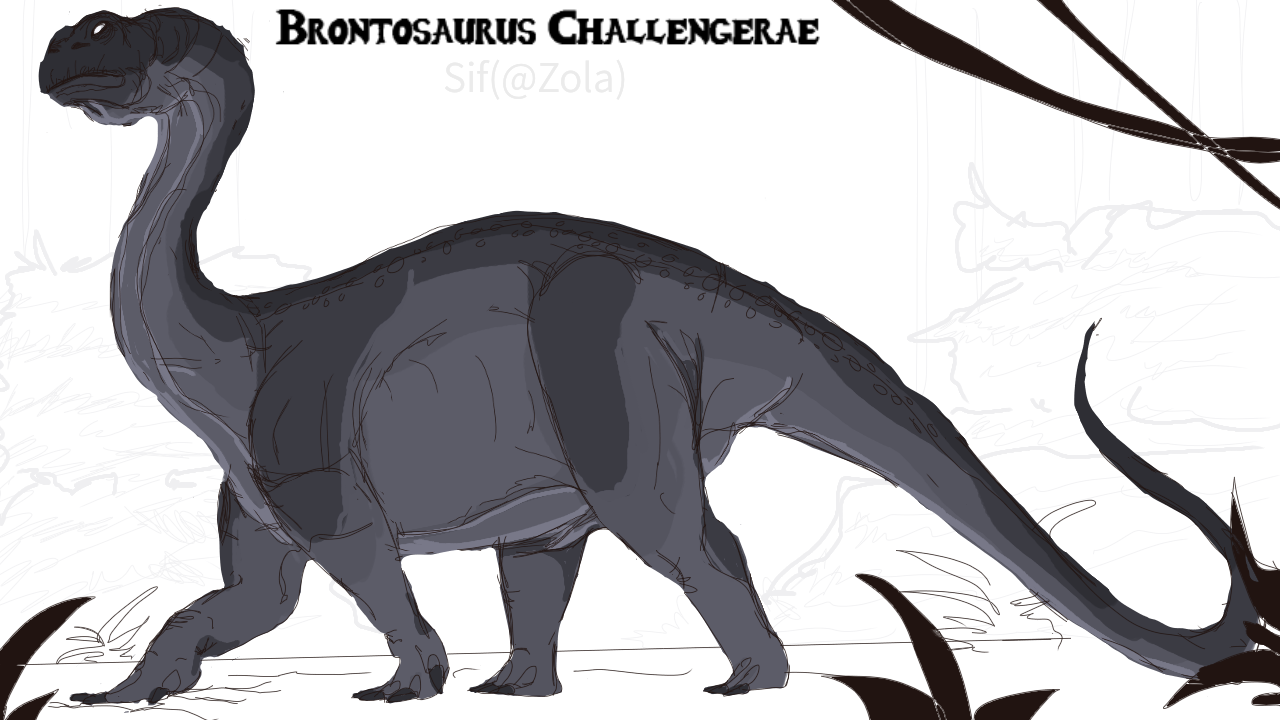Species Brontosaurus ChallengeraeOriginal sample genome: b. Parvus | |
| |
Identifier: BRON-YY-#### |
herbivore |
Family Diplodocidae |
Suborder Sauropodomorpha |
The gene sequence and first successful breeding of this species took place at Isla Panadero (Complex B - Active) |
|
72′ (20m) Long, 14′ (4.8m) Tall |
33,600lbs |
Measured Speed: |
|
Terrain Preference Is Primarily Grassland |
|
Preference of Diet Is Scrub/Tall grass/Leaves from short trees and lower branches |
|
SCGC is proud to announce that as of this year our research into the genetic coding of the b. parvus genome has proven conclusively that Brontosaurus is indeed a unique species of dinosaur and not simply a synonym of the similar Apatosaurus. Officially this discovery, announced to the public in April was determined by paleontological experts to retain the private and secretive nature of our ventures on Isla Panadero.
In honor of the fight to classify this as its own species which they were born into, it was decided that the new breed developed for our studies in Brazil and since moved here to Isla Panadero would be named after company founder George Challenger, who lived up to his name in his lifelong legacy of questioning all popular science.
Like Apatosaurus, for which the species was mistaken for several decades, Brontosaurus is a flat-headed, heavily built long -neck dinosaur who often grazes on lower brush and branches. They are slightly more capable than that species of reaching up to higher branches without needing to lift their forelegs, although they share the single claw on those forelegs to grab tree trunks.
Like Apatosaurus and other long-neck sauropods, Brontosaurus has slightly longer hind legs than forelegs, leaving its neck pointed more toward the ground than the sky as sometimes is depicted. It is believed specimens of this species will survive to an age of approximately 60 years.

